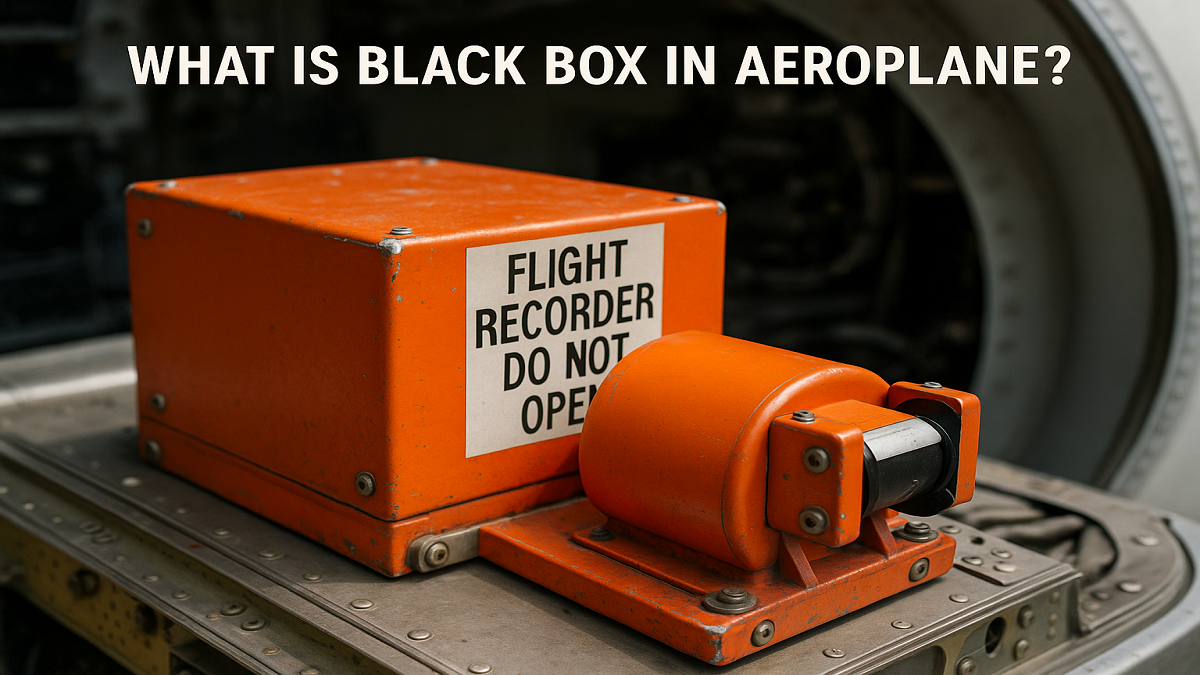Introduction to the Black Box
In aviation, the term “Black Box” refers to a vital device used to record flight data and cockpit conversations. Despite its name, the black box is usually painted bright orange to help investigators locate it easily in the event of a crash. It is one of the most critical tools in air accident investigations.
What Is a Black Box?
A Black Box in an airplane is a generic name for two separate devices:
- Flight Data Recorder (FDR)
- Cockpit Voice Recorder (CVR)
Together, these devices store crucial flight information that helps investigators determine the cause of an accident or technical malfunction.
Flight Data Recorder (FDR)
The FDR captures technical parameters of the flight, such as:
- Altitude
- Airspeed
- Engine performance
- Heading
- Vertical acceleration
- Control inputs
Modern FDRs can record hundreds of data points per second, allowing experts to reconstruct the final moments of a flight with incredible accuracy.
Cockpit Voice Recorder (CVR)
The CVR records all audio inside the cockpit, including:
- Pilot conversations
- Radio communications
- Ambient sounds, such as alarms or engine noise
CVRs typically store the last 2 to 25 hours of cockpit audio, depending on the model.
Why Is It Called a Black Box?
Although commonly known as a “Black Box”, the device is painted orange with reflective stripes to make it easier to locate after a crash. The term “black box” likely originated from early military aviation, where sensitive equipment was often kept in sealed black cases to protect it from tampering or damage.
Construction and Durability
One of the most remarkable features of the black box is its resilience. It is engineered to survive extreme conditions, including:
- High-impact crashes
- Temperatures up to 1,100°C (2,012°F)
- Deep-sea submersion (up to 20,000 feet underwater)
- Crushing pressures and high G-forces
Each unit is encased in a titanium or stainless-steel shell, with insulation and shock-absorbent materials to protect the internal memory.
How Does the Black Box Help in Air Crash Investigations?
After an aircraft incident, retrieving the black box is a top priority for aviation authorities. The data retrieved helps in:
- Reconstructing the sequence of events
- Identifying pilot actions or system failures
- Providing insights for preventing future accidents
- Improving aircraft design and regulations
Black box data has been instrumental in solving numerous high-profile crash investigations, often offering conclusive evidence when no eyewitnesses survive.
Location and Tracking
To aid in retrieval, black boxes are equipped with Underwater Locator Beacons (ULBs), which emit a “ping” once every second for up to 30 days after submersion. This signal allows search teams to track the device even in remote ocean locations.
Limitations and Future Developments
While black boxes are highly effective, they are not without limitations:
- They must be physically recovered for data extraction
- In rare cases, the data can be damaged or incomplete
To address this, aviation experts are exploring cloud-based flight data streaming, allowing real-time transmission of flight data to ground stations, especially during in-flight emergencies.



 Which Lake is known as the Five Flower L...
Which Lake is known as the Five Flower L...
 Which Waterfall is known as the Smoke th...
Which Waterfall is known as the Smoke th...
 Which Country Invented the Cricket?
Which Country Invented the Cricket?







